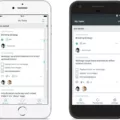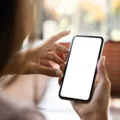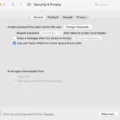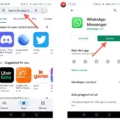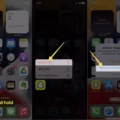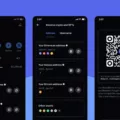In today’s digital age, where smartphones have become an integral part of our lives, the security of our personal data and information is of utmost importance. Apple’s iPhone, known for its robust security measures, is often considered a safer option compared to its Android counterparts. However, even the seemingly impenetrable iOS operating system is not immune to hacking. In this article, we will delve into the vulnerabilities of iOS apps and shed light on the potential risks that iPhone users may face.
While Apple has implemented stringent security protocols within the iOS ecosystem, hackers are continuously evolving their techniques to exploit any possible security loopholes. One common method used by hackers is to target third-party apps. Although Apple reviews all apps before they are made available on the App Store, some malicious apps may still manage to sneak through the screening process.
Third-party apps that are not officially vetted by Apple can potentially contain malicious code or vulnerabilities that can be exploited by hackers. These apps may unknowingly grant hackers unauthorized access to your device, allowing them to steal sensitive personal data or install malware. Therefore, it is crucial to exercise caution when downloading and using apps from sources other than the App Store.
Another avenue for hackers is to exploit security flaws within the iOS operating system itself. Apple regularly releases updates and patches to address any identified vulnerabilities, but hackers are quick to adapt and find new ways to exploit the system. Therefore, it is imperative for iPhone users to stay up to date with the latest iOS updates to ensure they are protected against known security risks.
Furthermore, users can inadvertently expose their iPhones to hacking by jailbreaking their devices. Jailbreaking, the process of removing software restrictions imposed by Apple, allows users to customize their iPhones and download apps from unofficial sources. While this may provide additional flexibility and features, it also opens the door for potential security breaches. Jailbroken devices are more susceptible to malware and unauthorized access, as they bypass the built-in security measures put in place by Apple.
To mitigate the risk of falling victim to iOS app hackers, it is essential to adopt certain security practices. Firstly, only download apps from trusted sources, such as the Apple App Store, and be vigilant for any suspicious or unauthorized apps on your device. Regularly update your iOS software to ensure you have the latest security patches installed. Additionally, refrain from jailbreaking your device, as it compromises the inherent security features of your iPhone.
While iPhones are generally considered more secure than Android devices, they are not impervious to hacking. Hackers can exploit vulnerabilities within the iOS operating system or third-party apps to gain unauthorized access to your iPhone, compromising your personal data and privacy. By staying informed about the potential risks and adopting recommended security practices, you can minimize the chances of falling victim to iOS app hackers.

Can an iOS App Be Hacked?
IOS apps can be hacked. Despite being generally considered more secure than Android devices, iPhones are not immune to hacking attempts. Hackers can exploit various security vulnerabilities in the iOS operating system or in third-party apps to gain unauthorized access to an iOS device.
Here are some ways in which iOS apps can be hacked:
1. Malicious Code Injection: Hackers can inject malicious code into an iOS app, either during the development process or by exploiting vulnerabilities in the app’s code. This code can be used to perform unauthorized actions, such as stealing personal data or gaining control over the device.
2. Man-in-the-Middle Attacks: In a man-in-the-middle attack, hackers intercept the communication between an iOS app and its server. This allows them to eavesdrop on sensitive information being transmitted, modify the data, or even inject their own commands.
3. Jailbreaking: Jailbreaking is the process of removing the restrictions imposed by Apple on iOS devices. While jailbreaking allows users to install unauthorized apps and customize their device, it also opens up the possibility of installing malicious software or apps from untrusted sources, which can compromise the security of the device.
4. Phishing Attacks: Hackers can create fake iOS apps or websites that closely resemble legitimate ones. By tricking users into entering their login credentials or personal information, hackers can gain access to their accounts or steal sensitive data.
5. Exploiting OS Vulnerabilities: Just like any other operating system, iOS can have vulnerabilities that hackers can exploit. These vulnerabilities can allow attackers to bypass security measures and gain unauthorized access to an iOS app or device.
It is important to note that Apple takes security seriously and regularly releases updates and patches to address vulnerabilities. However, it is crucial for users to stay vigilant, keep their devices up to date, and only download apps from trusted sources to minimize the risk of hacking.
Can A Hacker See Your Screen iPhone?
It is possible for a hacker to see the screen of an iPhone under certain circumstances. However, it is important to note that this type of attack is not common and requires specific conditions to be met.
1. Jailbroken iPhones: If an iPhone has been jailbroken, it means that the user has removed the restrictions imposed by Apple on the device’s operating system. This opens up the possibility for hackers to install malicious software or spyware that can monitor and record the screen activity.
2. Malicious Apps: In some cases, hackers may create and distribute malicious apps that can gain access to the screen of an iPhone. These apps may disguise themselves as legitimate applications, tricking users into installing them. Once installed, they can capture and transmit screen activity to the hacker.
3. Phishing Attacks: Hackers can employ phishing techniques to trick iPhone users into clicking on malicious links or downloading harmful attachments. These links or attachments can contain malware capable of recording screen activity and transmitting it to the hacker.
4. Remote Access Trojans (RATs): Remote Access Trojans are a type of malware that allows hackers to gain complete control over a device, including the ability to see the screen. If an iPhone becomes infected with a RAT, the hacker can remotely view and control the screen, potentially accessing sensitive information.
To protect your iPhone from screen monitoring attacks, it is crucial to follow these preventive measures:
– Avoid jailbreaking your iPhone, as it weakens the device’s security and increases the risk of unauthorized access.
– Only download apps from the official App Store, as Apple has stringent security measures in place to prevent malicious apps from being listed.
– Be cautious of suspicious links, emails, or attachments, and avoid clicking on them if they seem suspicious or come from unknown sources.
– Keep your iPhone’s operating system and apps up to date, as these updates often include security patches that address vulnerabilities.
– Install a reputable antivirus or security app on your iPhone to detect and remove any potential malware or spyware.
While the risk of a hacker seeing your iPhone screen is relatively low, following these precautions will help ensure your device remains secure.
Conclusion
While iPhones are generally considered to have more secure operating systems compared to Android devices, they are not immune to hacking. Hackers can exploit security loopholes in the iOS operating system or third-party apps to gain unauthorized access to your device, steal personal data, or install malware. It is important for iPhone users to remain vigilant and take necessary precautions to protect their devices from potential cyberattacks. However, it is worth noting that no smartphone is entirely immune to hacking, as hackers are constantly evolving their techniques and finding new ways to infiltrate digital technologies. Therefore, it is crucial for users to stay informed about the latest security measures and regularly update their devices with the latest software patches and security updates. Additionally, using reliable security tools like Certo Mobile Security can help detect and prevent spyware or malicious software on your iPhone, providing an extra layer of protection. Ultimately, maintaining a proactive approach to cybersecurity is essential for safeguarding your iOS devices and personal data.







